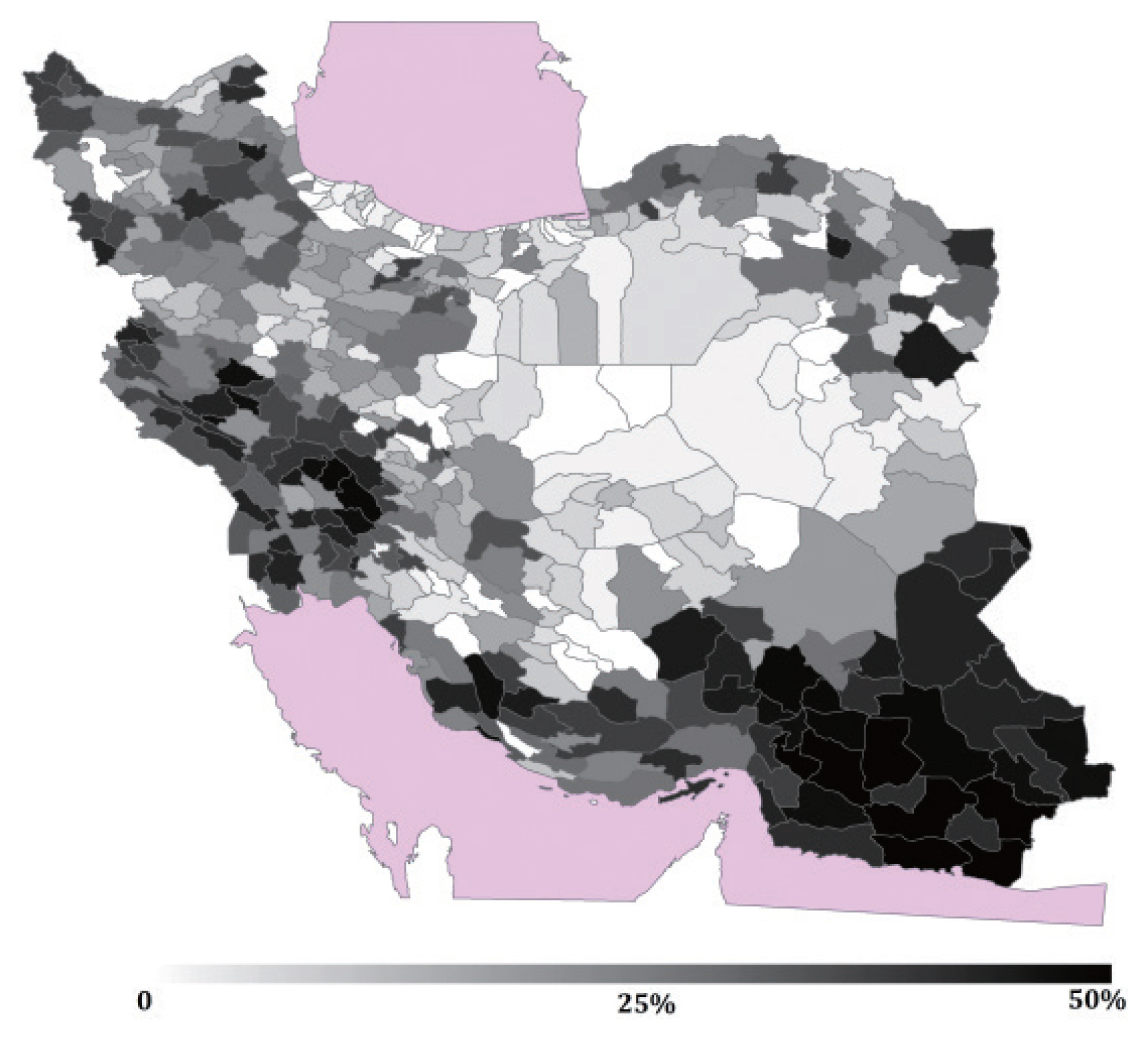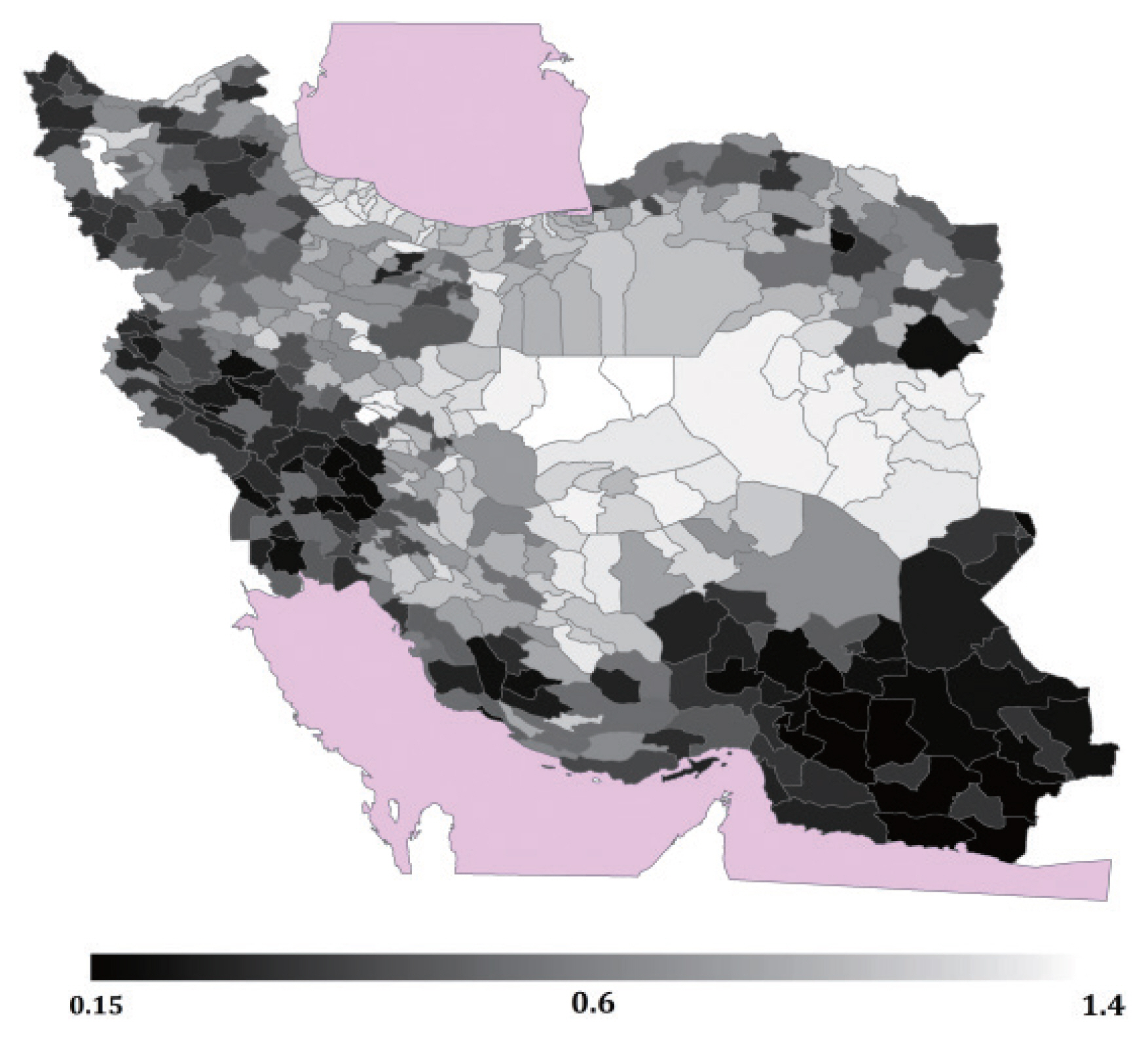Articles
- Page Path
- HOME > J Prev Med Public Health > Volume 54(1); 2021 > Article
-
Original Article
Household Overcrowding in Iran, a Low-middle-income Country: How Major of a Public Health Concern Is It? -
Leila Jansar Hosseini1,2
 , Ali Hussein Samadi3
, Ali Hussein Samadi3 , Abraha Woldemichael4
, Abraha Woldemichael4 , Masoumeh Najafi Gharebelagh5
, Masoumeh Najafi Gharebelagh5 , Satar Rezaei6
, Satar Rezaei6 , Enayatollah Homaie Rad7
, Enayatollah Homaie Rad7
-
Journal of Preventive Medicine and Public Health 2021;54(1):73-80.
DOI: https://doi.org/10.3961/jpmph.20.568
Published online: January 11, 2021
1Department of Nursing, Faculty of Nursing and Midwifery, Tehran Medical Sciences, Islamic Azad University, Tehran, Iran
2Guilan Road Trauma Research Center, Guilan University of Medical Sciences, Rasht, Iran
3Department of Economics, Shiraz University, Shiraz, Iran
4School of Public Health, Mekelle University College of Health Sciences, Mekelle, Ethiopia
5Ministry of Health and Medical Education, Tehran, Iran
6Research Center for Environmental Determinants of Health, Health Institute, Kermanshah University of Medical Sciences, Kermanshah, Iran
7Social Determinants of Health Research Center, Guilan University of Medical Sciences, Rasht, Iran
- Corresponding author: Enayatollah Homaie Rad, Social Determinants of Health Research Center, Guilan University of Medical Sciences, Emam Street, Rasht 41887-94755, Iran, E-mail: homaierad@gmail.com
Copyright © 2021 The Korean Society for Preventive Medicine
This is an Open Access article distributed under the terms of the Creative Commons Attribution Non-Commercial License (https://creativecommons.org/licenses/by-nc/4.0/) which permits unrestricted non-commercial use, distribution, and reproduction in any medium, provided the original work is properly cited.
Figure & Data
References
Citations

- Social determinants of health and diabetes: Results from a cohort study in Iran
SeyedJalal Hashemi, Mehrnoosh Jasemzadeh, Nader Saki, Bahman Cheraghian, Sara Sarvandian, Ali Montazeri, Maedeh Raeisizadeh, Marzieh Araban
Asian Journal of Social Health and Behavior.2023; 6(2): 86. CrossRef - Inadequate housing and pulmonary tuberculosis: a systematic review
Ju-Yeun Lee, Namhee Kwon, Ga-yeon Goo, Sung-il Cho
BMC Public Health.2022;[Epub] CrossRef
 KSPM
KSPM




 PubReader
PubReader ePub Link
ePub Link Cite
Cite




